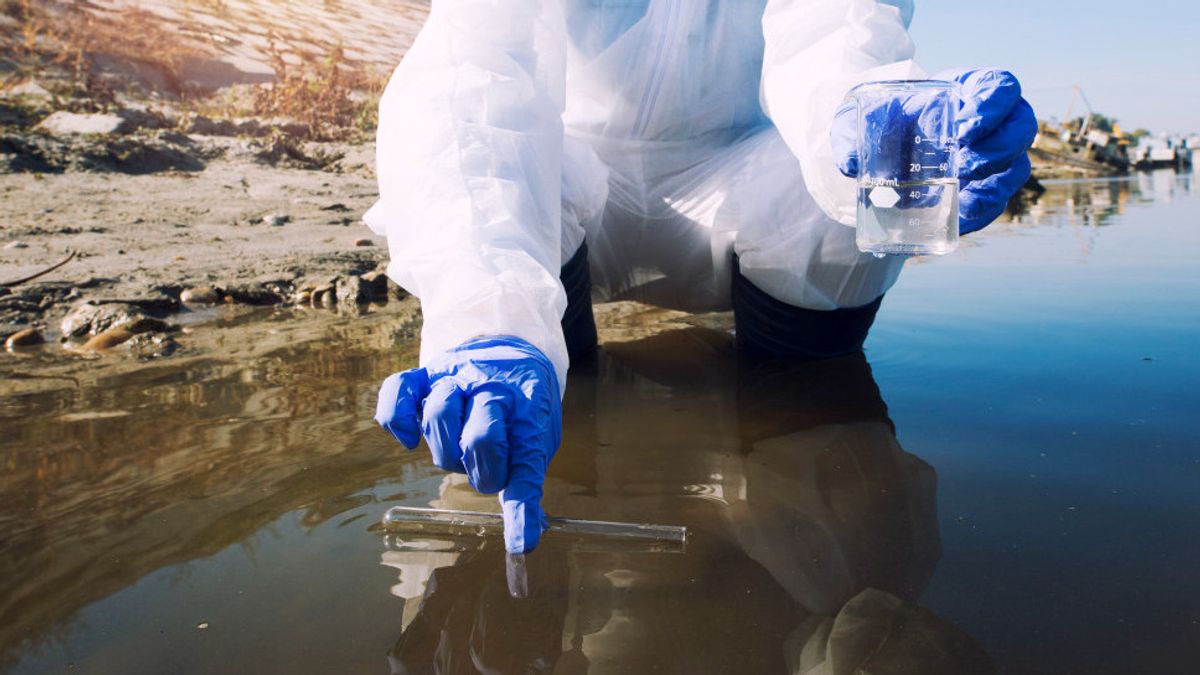YOGYAKARTA - According to the Great Dictionary of the Indonesian Language (KBBI), hydrology is the science that studies water, including underground water, its existence, circulation, distribution, physical and chemical properties, reactions with the environment, and its relationship to living things.
In everyday life, water plays a vital role for all living things, including humans, animals, and plants. Water is needed in various activities, such as photosynthesis in plants, drinking needs of humans and animals, and various industrial processes. One of the natural mechanisms that ensures the availability of water on earth is the hydrological cycle.
Comprehend Hydrological Cycle Process
The hydrologic cycle, also known as the water cycle, is a natural process by which water from the atmosphere returns to the earth and then back to the atmosphere in a cycle that continues to repeat itself. This cycle aims to maintain the balance of the amount and availability of water on earth.
The hydrologic cycle involves a series of important stages that occur continuously. Here is a complete explanation of the stages in the hydrologic cycle process:
Stages of the Hydrological Cycle Process
1. Evaporation
The first stage in the hydrologic cycle is evaporation. This process occurs when water on the earth's surface, such as from the ocean, lakes, or rivers, evaporates into water vapor due to the heat of the sun. The higher the intensity of the sun's heat, the greater the amount of water that evaporates into the atmosphere.
2. Transpiration
Transpiration is the evaporation of water from the bodies of living things, especially plants. This process takes place in plant tissue through stomata or small pores in the leaves. Transpiration also contributes to the water vapor released into the atmosphere.
3. Evapotranspiration
Evapotranspiration is a combination of evaporation (evaporation from water bodies) and transpiration (evaporation from living things). At this stage, the amount of water that turns into vapor increases significantly.
4. Sublimation
Sublimation is the process of direct change from ice or snow at the poles into water vapor without going through the liquid phase. This process is slower than evaporation because it requires certain conditions, such as low temperatures and special air pressure.
5. Condensation
After the water vapor rises into the atmosphere, the condensation process begins. At this stage, the water vapor turns into small particles in the form of ice or water droplets due to the cold temperature in the upper atmosphere. These particles then gather to form clouds.
6. Advection
Advection is the movement of clouds from one place to another caused by wind. This process usually occurs in long hydrological cycles, especially when clouds move from the ocean to land or vice versa.
7. Precipitation
Precipitation occurs when clouds can no longer hold the water vapor that has accumulated within them. As a result, the water vapor is released in the form of rain, snow, or hail, depending on the surrounding temperature.
8. Runoff
Rainwater that falls to the ground then flows from higher areas to lower areas, such as rivers, lakes, or the sea. This process is known as runoff.
9. Infiltration
Not all rainwater flows on the surface of the earth. Some water will seep into the ground through the pores of the soil in a process called infiltration. This seeping water becomes a groundwater reserve that slowly flows back to the ocean.
10. Conduction
The final stage in the hydrologic cycle is conduction. Here, water on the Earth's surface reabsorbs heat from the sun through direct contact, thus restarting the evaporation process.
Pentingnya Siklus Hidrologi
The Importance of the Hydrological Cycle
The hydrological cycle process ensures the sustainability of water availability on earth. With this cycle, water continues to circulate without ever running out, even though it is used by various living things for various purposes.
This cycle also helps maintain the balance of the ecosystem, supports plant growth, provides water resources for humans and animals, and regulates the earth's temperature through the process of evaporation and rain.
By understanding the hydrological cycle process, we can better appreciate the importance of preserving water resources. This process is proof that nature has its own way to support the lives of all creatures.
Talking about Hydrology, apparently BRIN is Building a Hydrological Disaster Monitoring System!
So after knowing how the hydrological cycle process works, check out other interesting news on VOI.ID, it's time to revolutionize the news!
The English, Chinese, Japanese, Arabic, and French versions are automatically generated by the AI. So there may still be inaccuracies in translating, please always see Indonesian as our main language. (system supported by DigitalSiber.id)









